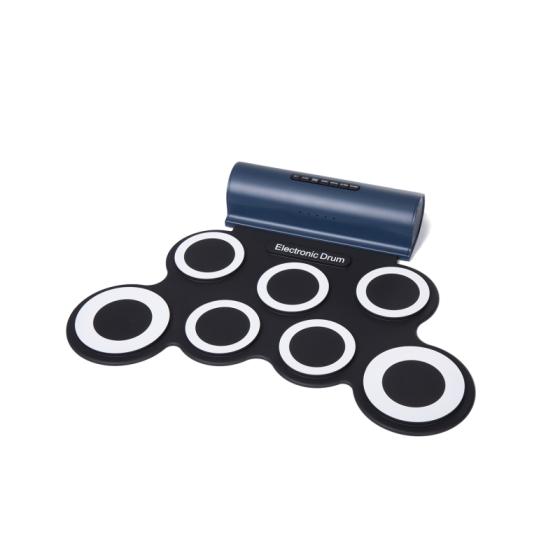
Now, in terms of what e-kit to buy, that’s a much bigger question and the bad news is you’re going to struggle to get anything decent for under £700. If you’re really cheap wrap a couple of pairs of socks over the beater and hold them on with an elastic band. Another quick fix is to use a softer bass drum beater to reduce the kick noise. You can also buy / make a sound isolation platform to help alleviate the issue of sound being transmitted through floors. If possible set it up on a concrete floor. Mesh heads are the quietest but (at the time of writing) cymbal pads are still solid rubber and therefore pretty noisy. The sound of the bass drum and hi-hat can be particularly troublesome for anyone below you and even just the noise of the sticks hitting the rubber pads can be pretty loud.

A small word of caution before you think you’ll be practicing the drums at 2am – an e-kit is far from silent! It’s a LOT quieter than an acoustic kit but if you plan to play one in an upstairs flat above someone’s bedroom I’ve got bad news for you. The biggest single advantage of an e-kit is that you can play it more often. Then practice, practice, practice! The Electronic Drum Kit
Iword electronic digital drum instructions full#
If noise is an issue stuff the bass drum full of pillows and invest in some of the drum muting systems mentioned earlier. It’ll probably be worth very little to anyone else after you’ve given it years of abuse so if you have the space, somewhere dry, you’ll never regret keeping it. You form an indescribable bond with your first kit and going back to playing it years down the line is like being reunited with a long lost best friend. Kits such as the Pearl Roadshow are available for just £430 brand new WITH cymbals and stands! That’s incredible value for money.Ī word of advice too – don’t sell your first drum kit! I remember my first Premier kit well and 30 years later wish I still had it (I still have the snare drum and use it regularly). You can pick up a second hand beginners’ drum kit with cymbals and hardware for around £300 – sometimes cheaper! This will be more than enough to last you for your early years of learning drums. So let’s assume you’ve got a soundproof room or live in a field. Ultimately if you’re constrained by volume limitations there will be compromises and it’s all down to your personal preference and budget as to what route you decide to go down. That said at least with the low volume acoustic option you retain most of the feel of a drum kit… but a decent e-kit will probably sound better.
Iword electronic digital drum instructions plus#
Once you’ve added the cost of an acoustic kit PLUS all of the above you’re approaching the territory of ‘very good e-kit’ and if you’ve got £1,200+ to spend on a kit I would seriously consider something like the Yamaha DTX-562K or the Roland TD-17KV.

Recent innovations such as the Zildjian low volume L80 cymbal range and the Aquarian Super-Pad heads overcome a lot of these volume issues BUT at a cost. Yes, you can cover it in silencer heads and cymbal mutes but then it sounds rubbish, feels rubbish and you lose all the advantages of an acoustic kit. Unless you’re fortunate enough to own a soundproof rehearsal space, an acoustic kit brings with it problems that at best will severely limit how often you can practice and at worst can prevent you from practicing at all. Pretty much louder than any other instrument and this is a big problem for most people. I cannot emphasise enough how LOUD acoustic drum sets are! However loud you think they are, they’re louder. So if you can get away with the volume, acoustic kits win hands down.īUT, and this is a big but, for most people the volume is a really big problem. The volume, the tone, the feel and the sheer power of an acoustic drum kit is something to behold and it will never be replaced. You can buy a very nice acoustic kit for the same price as a mediocre e-kit and really nothing compares. If you’ve got the space and understanding neighbours buy acoustic drums. I’ll cut to the chase straight away then completely contradict myself later on.


 0 kommentar(er)
0 kommentar(er)
